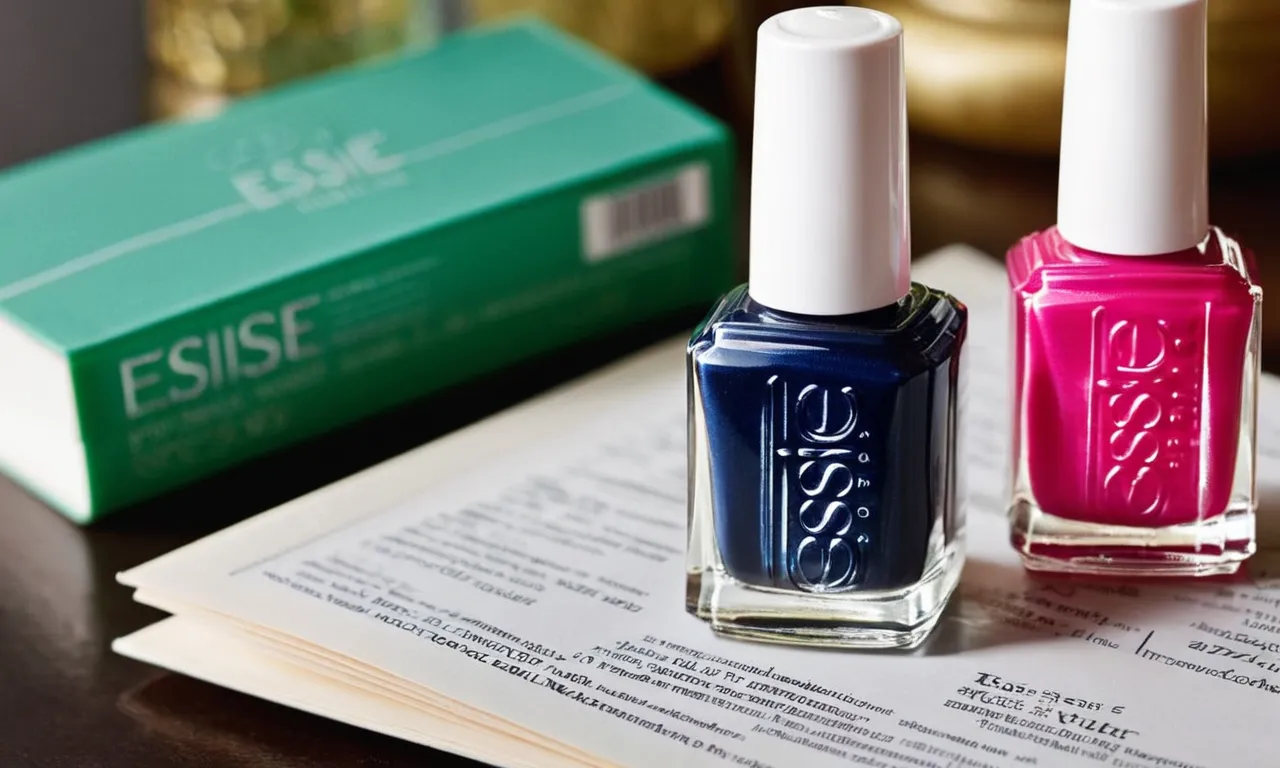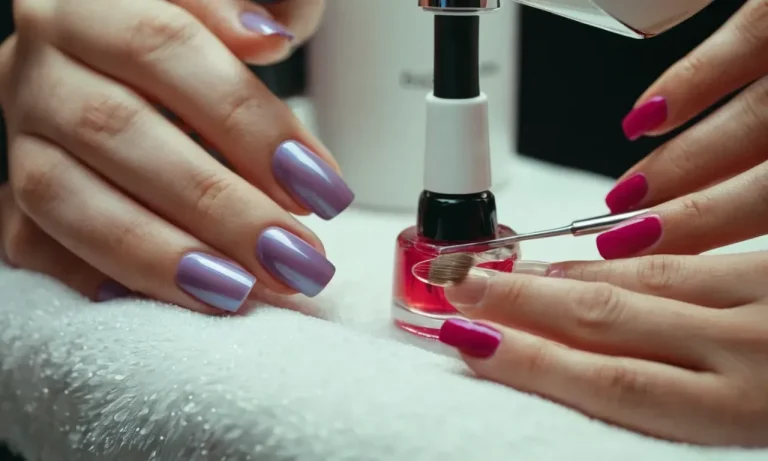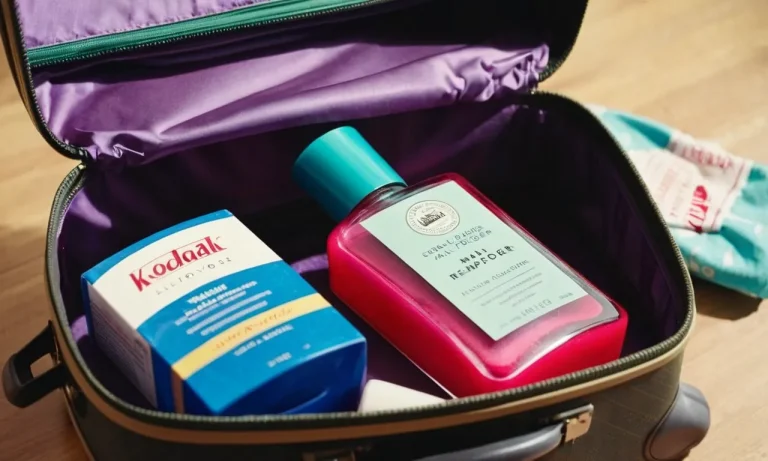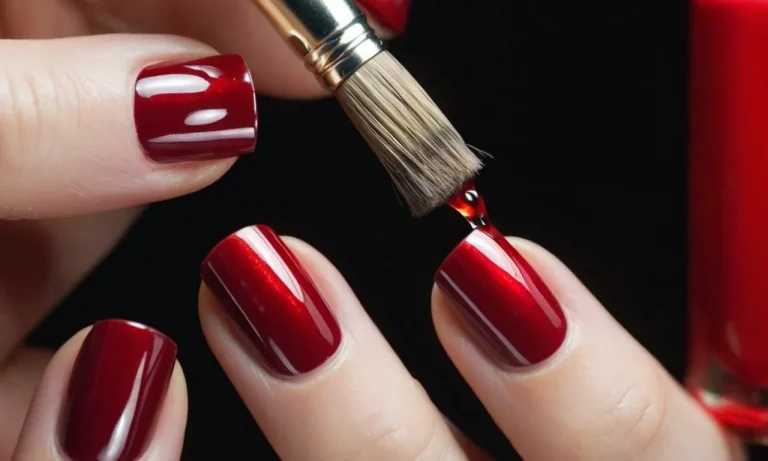Does Essie Nail Polish Contain Formaldehyde?
With the rise in awareness around potentially harmful ingredients in beauty products, many people have questions around what exactly is in the nail polishes they use. Essie is one of the most popular salon nail polish brands, but does it contain controversial ingredients like formaldehyde?
In this comprehensive guide, we’ll dig into Essie’s ingredients and manufacturing process to find out once and for all if Essie nail polishes contain formaldehyde.
If you’re short on time, here’s a quick answer: Most Essie nail polishes are formaldehyde free, however a few select shades may contain small traces as a preservative. Essie aims to remove all formaldehyde from their formulations.
What is Formaldehyde and Why is it Controversial?
Definition of formaldehyde
Formaldehyde is a colorless gas that has a strong odor. In cosmetics like nail polish, it is often used in a water-based solution called formalin which contains around 37% formaldehyde. Formaldehyde works well as a hardener and preservative in products due to its antibacterial and antifungal properties.
How formaldehyde is used in cosmetics
Formaldehyde may be found in a variety of cosmetic products besides nail polish, including:
- Eye shadow
- Mascara
- Lipstick
- Blush
- Shampoos
In nail polishes, formaldehyde helps harden the polish so it is more durable and long-lasting. It also acts as a preservative to prevent bacteria and fungus growth. Most major nail polish brands use some amount of formaldehyde or formaldehyde-releasing preservatives.
The concern around formaldehyde involves the potential health risks of exposure.
Health concerns over formaldehyde exposure
Formaldehyde is a known human carcinogen that can cause certain cancers like nasopharyngeal cancer and leukemia with repeated or prolonged exposure. Other potential short-term health effects of exposure include:
- Eye, nose, throat irritation
- Wheezing, coughing
- Nausea, skin irritation
The amount of formaldehyde in nail polish ranges from trace amounts to up to 5% by weight. But it is unclear what levels of exposure cause harmful effects. While using formaldehyde-containing products occasionally may pose little risk, ongoing exposure over months or years could potentially cause health issues.
People at higher risk of adverse effects include:
- Those who frequently use numerous formaldehyde-containing beauty products
- Beauty technicians exposed daily at work
- People sensitive or allergic to the ingredient
Some resources with further information include:
Review of Essie’s Product Formulations and Claims
Overview of Essie brand
Essie is a popular nail polish brand founded in 1981 by Essie Weingarten. It offers a wide range of nail polish colors and care products sold in over 100 countries. Essie is known for its on-trend nail polish shades with cheeky names and high-quality formulas.
Throughout its 40+ years in business, Essie has tried to keep up with changing consumer preferences and nail polish ingredient safety concerns. The brand has reformulated products over time to remove controversial ingredients like formaldehyde, toluene, and dibutyl phthalate (DBP).
Essie’s statements on formaldehyde use
In the early 2010s, some consumers raised concerns about traces of formaldehyde in Essie polishes. Formaldehyde is a preservative used in cosmetics that has been linked to cancer at high concentrations.
Essie responded by reformulating their products and releasing this statement in 2012:
“During recent product testing, the brand conducted an evaluation of Essie nail colors and determined that traces of formaldehyde at very low levels may be present in some products. Essie has reformulated these shades with new ingredients and formaldehyde has been eliminated from the revised formulations.
“
On its website today, Essie states, “Essie nail polish does not contain formaldehyde as an ingredient.” The brand claims its products comply with global cosmetic safety regulations.
Analysis of Essie’s nail polish ingredients
Most Essie nail polishes today list 15-25 ingredients on the packaging, with key ones including:
- Nitrocellulose: the main film-forming ingredient that hardens into a shiny coat on nails
- Adipic Acid Neopentyl Glycol/Trimellitic Anhydride Copolymer: helps polish adhere to the nail
- Acetyl Tributyl Citrate: makes the formula flexible and chip-resistant
- Isopropyl Alcohol: helps polish dry quickly
- Stearalkonium Bentonite: thickening agent
- Styrene/Acrylates Copolymer: film-forming polymer for shine
- Benzophenone-1: UV absorber/stabilizer
Based on the ingredients lists, it appears Essie has removed formaldehyde, toluene, DBP, and other controversial ingredients from its nail polishes today.
Independent testing by consumer watchdog groups like the EWG Skin Deep Cosmetics Database seems to confirm Essie polishes do not contain significant traces of formaldehyde. Essie frequently scores well in terms of low hazard levels compared to other mainstream nail polish brands.
Which Essie Polishes May Contain Traces of Formaldehyde?
Essie polishes with DMDM hydantoin
Some of Essie’s iconic nail polish formulas contain DMDM hydantoin, a common preservative that can release small amounts of formaldehyde over time. Specifically, Essie polishes containing toluene or formaldehyde donors like DMDM hydantoin may expose consumers to low levels of this compound according to cosmetic safety organizations like the EWG.
DMDM hydantoin allows nail polish to stay fresh and usable for longer by preventing microbial growth. However, there has been some concern over the years that chronic exposure to polish containing this preservative may cause issues for sensitive individuals or professionals who handle nail products regularly.
Alternative preservatives used by Essie
In recent years, more natural polish options have emerged from Essie in response to the demand for safer, non-toxic formulas. Many of Essie’s Gel Couture polishes are now completely “free of DBP, toluene, formaldehyde, and formaldehyde resin” according to the brand.
Instead of concerning preservatives like DMDM hydantoin, these improved nail lacquers use alternative antimicrobial ingredients considered safer and less likely to degrade into formaldehyde over time. Some examples include phenyl propanol and ethanol.
Outlook for formaldehyde-free polish
While Essie still uses some amount of DMDM hydantoin in many classic polish lines, they seem to be expanding their selection of gentler, toxin-free gel and regular lacquer options every year. With safer preservative technology improving all the time, Essie fans concerned over traces of controversial ingredients have more and more choices.
Based on Essie’s recent focus on wellness-oriented and “free-of” polish formulas, we can likely expect more formaldehyde-free options hitting shelves soon. Consumers interested in non-toxic nail colour with staying power should keep an eye out for these cleaner polish innovations!
Conclusion
While Essie aims to remove formaldehyde from all nail polishes, occasional use of the preservative DMDM hydantoin in some shades means trace levels may still be present. However, the brand has made significant efforts to eliminate formaldehyde and use safer alternatives in their vast color portfolio.
When in doubt, check the ingredients list and consider Essie’s extensive formaldehyde-free options.







